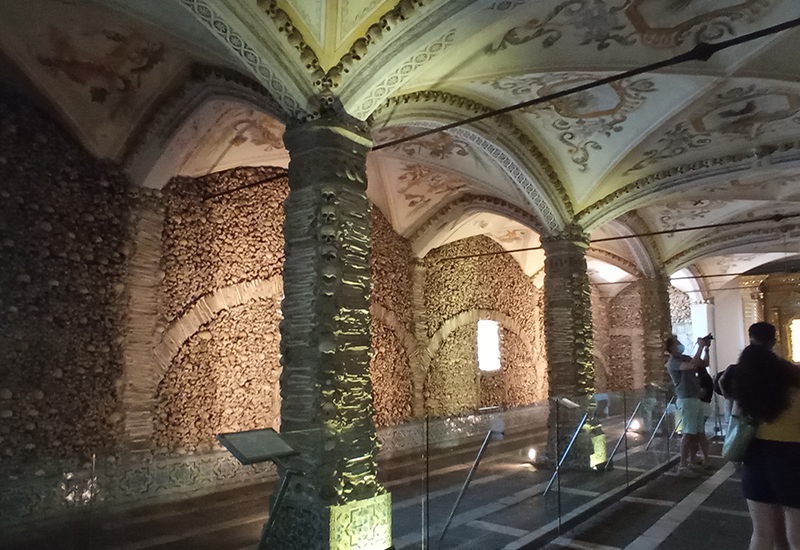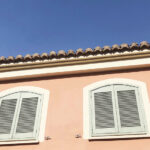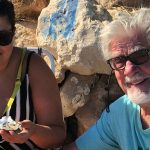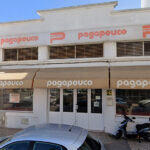The first of November is known in the Christian calendar as All Saints’ Day, a time to give thanks to our patron saints for their good deeds and the miracles surrounding them, but it is All Souls’ Day, celebrated on 2nd November, when we pay homage to our loved ones who have since passed on.
Around the world, the dead are celebrated in many different ways, but here in the Algarve, we don’t have to go far to find shrines paying homage to the dearly departed in a very macabre way. The Capela dos Ossos, or Chapel of Bones, can be found in various towns throughout Portugal and especially here in the Algarve.

Lagos
On the south side of the Church of São Sebastião in Lagos, you will find another small bone chapel. The church itself was built between the 14th and 16th centuries and houses a statue of Nossa Senhora da Glória, which was donated by D. João V. in the 14th century. Little is known about Lagos’ bone chapel, but if you are in the area, why not give it a visit?
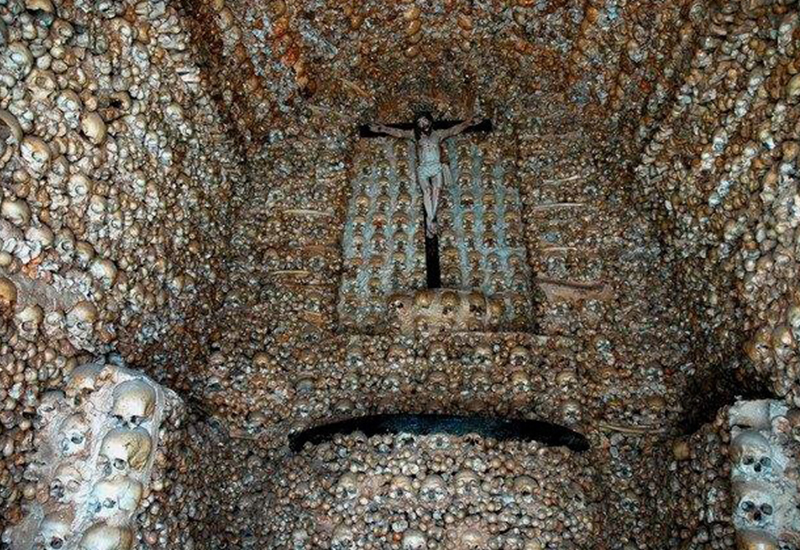
Alcantarilha
On the right-hand side of the Church of Nossa Senhora da Conceição in Alcantarilha is a small side chapel decorated with over 1,500 human bones and skulls, ornately arranged in various patterns embedded into the walls, ceiling and altar. Dating back to the 16th century, the remains are said to have come from a former cemetery and placed within the chapel when graveyard space was needed.

Faro
In the centre of Faro, in the courtyard of the 18th century Carmelite Church of Nossa Senhora do Carmo, you will find the largest Capela dos Ossos in the Algarve, decorated with over 1000 bones and 1245 skulls of Carmelite friars. Inaugurated in 1816, the four-by-six-metre ossuary was built like all others to emphasise the reality of death and proclaim a godly life to avoid hell for all eternity. Above the entrance, an inscription reads: “Stop here and consider that you will reach this state too”, reminding us all that death is an inescapable fact.
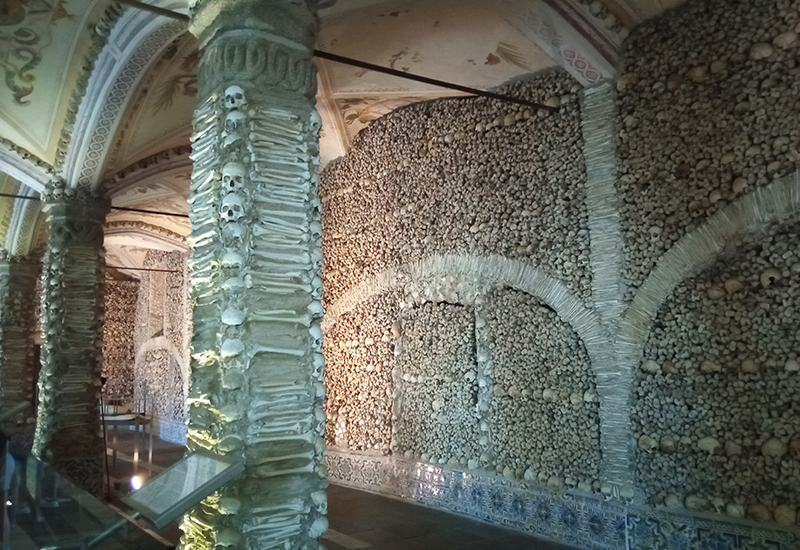
Évora
Outside the Algarve in Évora, you will find the most striking Capela dos Ossos in the country. It is located next to the 16th century Church of São Francisco, which replaced the earlier Romanesque church dating back to 1226.
The chapel was built by the Franciscan friars and is the largest collection of human remains in Portugal, with an estimated 5,000 skeletons decorating the walls and ceilings. Exhumed from Évora’s medieval cemeteries during the 1550s, the bones of the departed can be seen stacked against the walls, with skulls decorating the ceiling in ornate patterns. Even the chandeliers are adorned with bones.
What’s unique about the bone chapel in Évora is the two complete skeletons of an adult and a child, which were once hung from the rafters, greeting all those who enter. At the entrance, a portion of Ecclesiastes 7:1 from Vulgate is written above the door and reads “Melior est die mortis die nativitatis” (Better is the day of death than the day of birth).

Alentejo
There are two bone chapels in the Alentejo. The Capela dos Ossos in Campo Maior, was built in 1766 after a gunpowder magazine destroyed the citadel and killed two-thirds of the population of the city in 1732. Those who were victims of this tragedy now rest in the chapel. The smallest of all Portuguese bone chapels is the chapel of Monforte, dating back to the 18th century. Like all others, it is ornately decorated with bones exhumed from the old cemetery, with a human skull and two crossed bones embedded above the main entrance, giving a glimpse into what lies inside.
